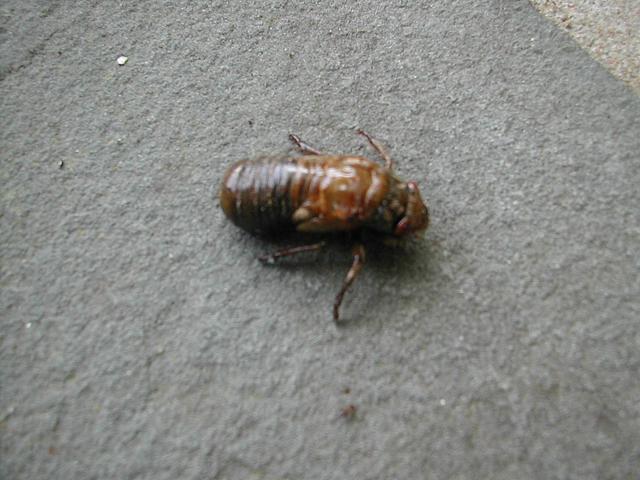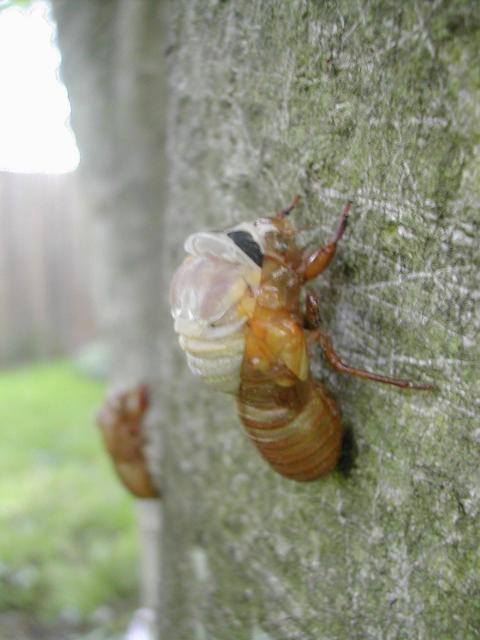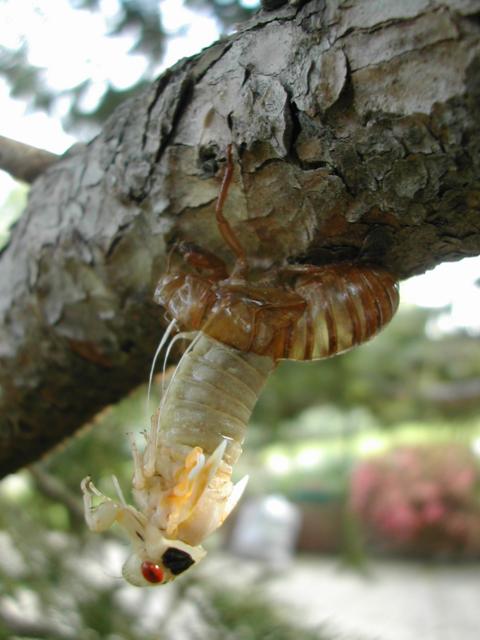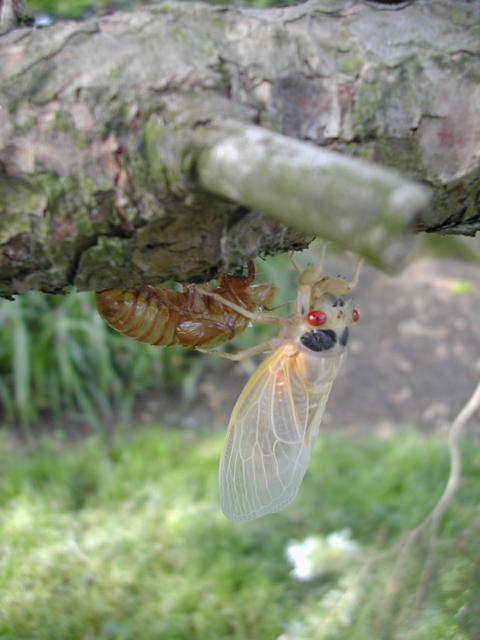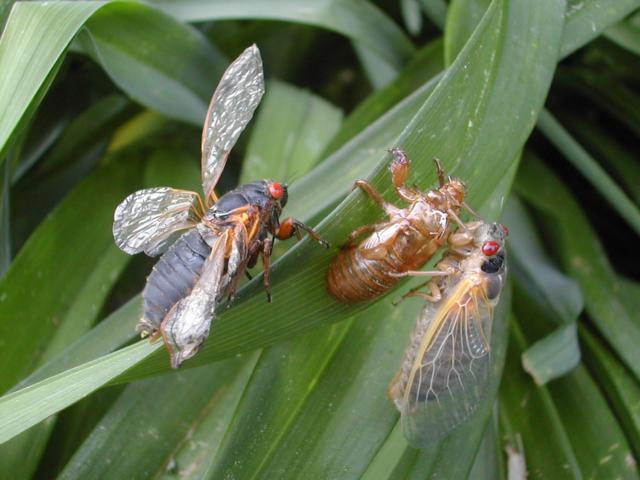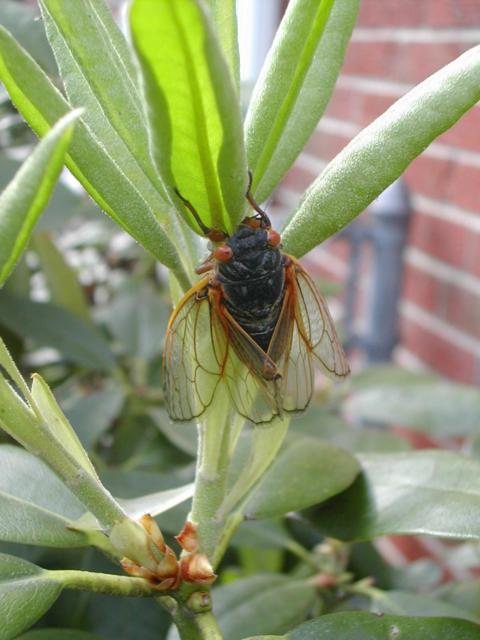For a couple of weeks in May the cicadas emerged from the ground and
molted from the wingless, underground form to the winged adult form.
Here are some of the emergence holes. The coins and the dead
adult cicadas give the scale. According to the newspaper, there
could be as many as a million to a
million and a half cicadas emerging per acre.
To avoid predators, the nymphs emerge from the ground during the
night. Most complete the molting process overnight, but long
after the sun is up some late
starters are still in process and available for photography.
The nymphs crawl to a vertical surface and go up. If a nymph
starts out at the base of a tree it will climb quite high. They
seem to be pre-programmed to go a fixed distance. If the nymph
starts out at a distance from the tree it will not climb so high.
If it fails to reach a suitable vertical surface it climbs whatever it
can. Some of them even molt on blades of grass. It appears
that if the nymph fails to find something to climb it just dies.
This nymph was dead in the middle of our patio.
On crossing the patio to go back inside after we were finished taking
photos I
inadvertently stepped on the dead nymph. White stuff squooshed
out.
Here is a more successful nymph that climbed the magnolia tree and is
starting to emerge. It has split the back of its shell at the
head end and is starting to push its way out.
The next photo shows a cicada on the fir tree with most of its body out
and hanging upside down to let its wings expand. It pumps fluid
from its abdomen (I assume that's the white stuff) into the wings, and
gravity causes the wings to reach their proper shape. If the
cicada can't achieve the correct posture its wings will not form
correctly.
This cicada failed to extract itself from its nymph exoskeleton before
its new exoskeleton started to harden. It was trapped and died
hanging from an althea leaf.
The next photo shows another cicada on the fir tree. This one's
wings are fully expanded. The body and wing veins are still
white, and the wings are opaque. In order to exit the shell, the
exoskeleton must be soft. After exiting, it takes about an hour
for the exoskeleton to harden up. At this stage the cicada is the
insect equivalent of a softshell crab. Yum.
This photo shows two cicadas on a daylily. The one on the right
is starting to color up; the body is turning green, the wing veins are
turning orange, and the wings are becoming transparent. The one
on the left evidently didn't achieve the correct posture and its wings
are terribly misshapen. It's a goner.
This cicada, on a rhododendron, has just about completed the process
and is an adult ready to fly away to a tree. Its exoskeleton has
darkened to black and hardened, and its wings are fully transparent.
If, from the variety of plants these cicadas were on, you get the idea
that they were everywhere, you are correct. In some areas of our
back yard there were so many cicadas emerging in the grass that it was
impossible
to walk without stepping on them. They made a crunching sound
underfoot.
To return to Cicada page
click here
